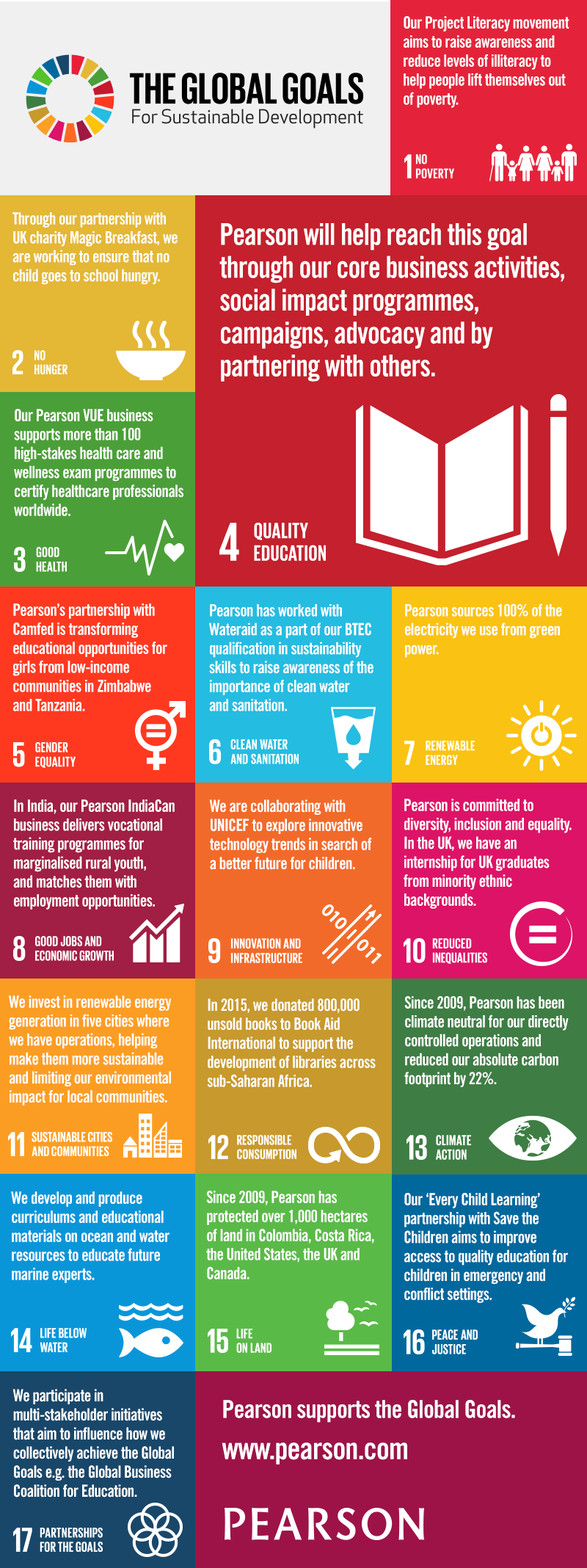Later this month, when world leaders meet at the United Nations in New York, they will announce their commitment to the new Global Goals for sustainable development, setting out their ambition for a more peaceful and prosperous world. All 17 goals are important, but the fourth – “to ensure inclusive and equitable quality education and promote lifelong learning opportunities for all” – makes many of the others that much more achievable, too. For education can slow and even reverse the vicious cycle of poverty, and give people the chance to improve their prospects, their communities and their lives.Education is a pathway to improved health, nutrition and wellbeing, particularly for women and children (goals 2, 3 and 4). A child born to a mother who can read is 50% more likely to survive past the age of 5. Education helps create ‘global citizens’ with the knowledge to promote responsible consumption and production patterns (goal 12) and aids the development of peaceful societies (goal 16). Education has an effect on nearly every aspect of the societies in which we work.
Just one vivid example of this: through the Sudiksha program in Hyderabad, India, which we invest in via our Pearson Affordable Learning Fund, local women are empowered to open and run neighbourhood branches of a low-cost preschool network under a profit-sharing model. Sudiksha trains and educates the women as teachers, and they are then able to teach students who otherwise would not be able to attend school. As the programme progresses, the risk of extreme poverty decreases for both the women and their students.
By putting efficacy at the heart of everything we do in education, Pearson has been contributing to a wider movement to focus much more on outcomes over inputs. So it’s encouraging that the new goals also focus on outcomes, such as expanding access to education, ensuring the success of students (measured by completion rates) and enabling them to progress in their lives (tracked by placement into jobs or further education). This is particularly important in a world of constrained resources, where everyone involved in education is trying to do more with less.
These goals, of course, are a vital means by which we fulfil Pearson’s own purpose – to empower people to progress in their lives through learning – which is reflected in the reach and impact of our people, products and services. But beyond our purpose, it is our responsibility as a learning company to support the Global Goals' focus on improved quality of life for the world’s poorest citizens, and to do so by using our expertise in teaching and learning.
Clearly, we can’t do this alone, and we know that the Global Goals themselves call for a robust network of partnerships to carry out this work (goal 17). So we will continue working with our partners Save the Children, Kiva and Camfed, and will step up the work we have started with a number of global education partners through Project Literacy. We will offer support in new ways as well.
Plans to give widespread international attention to the Global Goals this month include an initiative called the World’s Largest Lesson. We will be playing an active role in promoting that lesson. You can help by learning all you can about the Global Goals at the link above, reading about the World’s Largest Lesson and sharing it on social media using #telleveryone and #globalgoals.
Everyone, no matter where they were born and under what circumstances, deserves an equal shot at a healthy, safe and fulfilling life. With these ambitious new goals, the world is setting out to achieve just that – and to do so in our lifetime. I look forward to all of us at Pearson being able to say that we played our part in making that happen.



